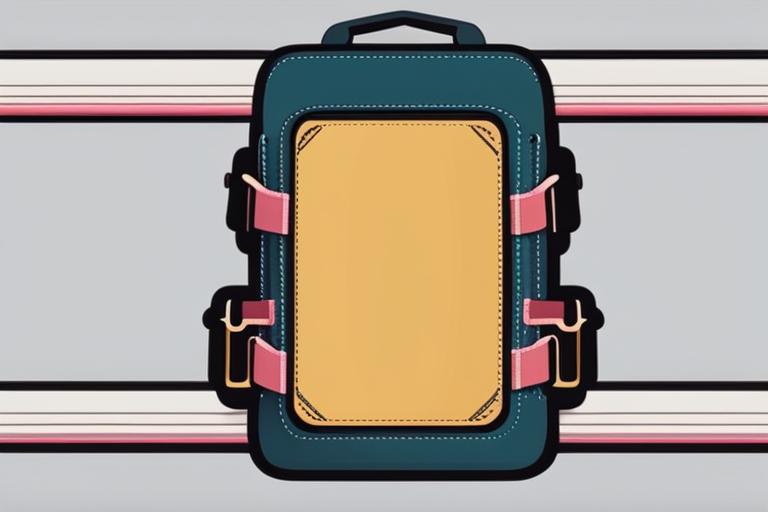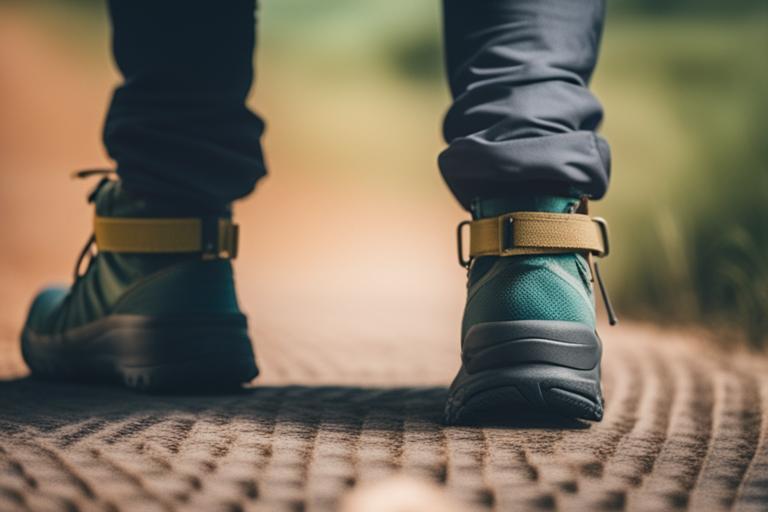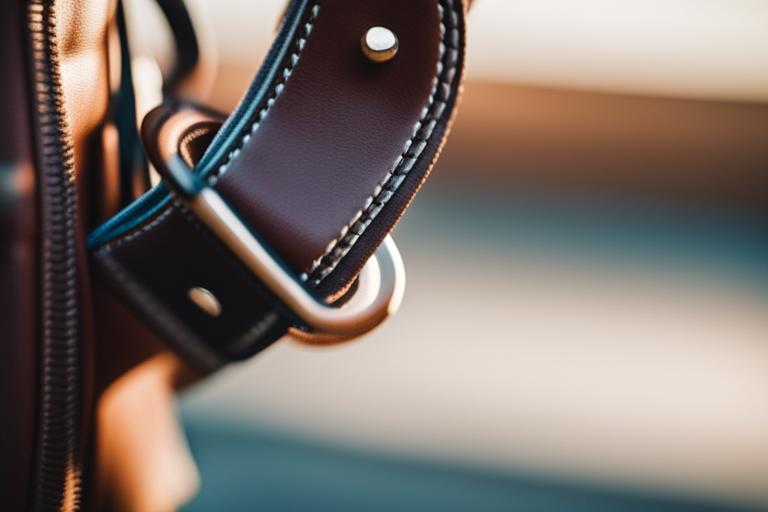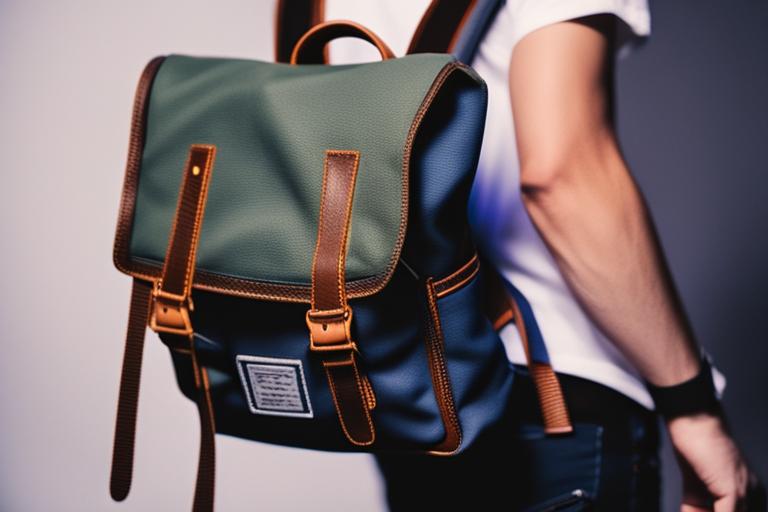Backpack straps are an essential part of any backpack, providing comfort and support for the wearer. The material used for backpack straps plays a significant role in the overall comfort, durability, and suitability for various types of backpacks and activities. In this article, we will explore the different materials used for backpack straps, compare their properties, and provide recommendations on which material is best suited for different backpack types and activities.
What Are Backpack Straps Made Of and Which One to Choose?
- Overview of common materials used for backpack straps.
- Advantages and disadvantages of polyester, nylon, leather, and canvas backpack straps.
- Comparison of materials based on durability, weight, comfort, and cost.
What Materials Are Backpack Straps Made Of?

Overview of Common Materials
Backpack straps are most commonly made of polyester, nylon, leather, and canvas. Each material has unique properties that make it suitable for different types of backpacks and activities.

Polyester
Polyester is a synthetic material that is lightweight, durable, and affordable. Polyester straps are easy to clean and maintain. However, they may not be as comfortable as other materials and may not be as durable as nylon or leather straps.
Pros of Polyester Backpack Straps
Polyester backpack straps are affordable and lightweight, making them a popular choice for budget backpacks and daypacks. They are also easy to clean and maintain, making them a practical choice for outdoor activities.
Cons of Polyester Backpack Straps
Polyester backpack straps may not be as comfortable as other materials, especially if the backpack is heavy or if the wearer is carrying the backpack for an extended period of time. They may also not be as durable as nylon or leather straps and may wear out more quickly.

Nylon
Nylon is a synthetic material that is lightweight, durable, and water-resistant. Nylon straps are comfortable and easy to adjust. However, they may be more expensive than polyester straps.
Pros of Nylon Backpack Straps
Nylon backpack straps are lightweight, durable, and water-resistant, making them a great choice for outdoor activities and travel. They are also comfortable and easy to adjust, making them a popular choice for hiking and backpacking.
Cons of Nylon Backpack Straps
Nylon backpack straps may be more expensive than other materials, such as polyester. They may also not be as strong as leather straps, making them less suitable for heavy loads.

Leather
Leather backpack straps are durable, strong, and stylish. They are also comfortable and can last for many years with proper care. However, they may be more expensive than other materials and may not be suitable for all types of backpacks and activities.
Pros of Leather Backpack Straps
Leather backpack straps are strong, durable, and stylish, making them a great choice for high-end backpacks and fashion-forward travelers. They are also comfortable and can last for many years with proper care.
Cons of Leather Backpack Straps
Leather backpack straps may be more expensive than other materials, such as polyester or nylon. They may also not be suitable for all types of backpacks and activities, as they may be too heavy for lightweight daypacks or too luxurious for outdoor activities.

Canvas
Canvas is a natural material that is often used for backpack straps. It is durable, breathable, and easy to clean. Canvas straps are also comfortable and can be stylish. However, they may not be as strong as nylon or leather straps.
Pros of Canvas Backpack Straps
Canvas backpack straps are durable, breathable, and easy to clean, making them a great choice for outdoor activities and travel. They are also comfortable and can be stylish, making them a popular choice for fashion-conscious travelers.
Cons of Canvas Backpack Straps
Canvas backpack straps may not be as strong as nylon or leather straps, making them less suitable for heavy loads or extended hiking trips. They may also not be as water-resistant as synthetic materials, such as polyester or nylon.
Other Materials
Other materials used for backpack straps include neoprene and mesh. Neoprene straps are soft, flexible, and water-resistant, making them a great choice for water sports and outdoor activities. Mesh straps are breathable and lightweight, making them a popular choice for daypacks and lightweight backpacks.
Comparison of Materials
Durability
When it comes to durability, leather and nylon straps are the most durable. They can withstand heavy loads and extended use without showing signs of wear and tear. Polyester and canvas straps are less durable and may wear out more quickly, especially with heavy use.
Weight
Polyester and canvas straps are the lightest, making them a great choice for lightweight daypacks and travel backpacks. Nylon straps are slightly heavier but still lightweight enough for most activities. Leather straps are the heaviest, making them less suitable for lightweight backpacks and daypacks.
Comfort
Nylon and leather straps are the most comfortable, as they can be adjusted to fit the wearer’s body and provide support for heavy loads. Polyester and canvas straps may not be as comfortable, especially if the backpack is heavy or if the wearer is carrying the backpack for an extended period of time.
Cost
Polyester straps are the most affordable, making them a popular choice for budget backpacks and daypacks. Nylon and canvas straps are more expensive than polyester, but still affordable for most travelers. Leather straps are the most expensive, making them a luxury choice for high-end backpacks and fashion-conscious travelers.
| Material | Cleaning | Storage | Repair |
|---|---|---|---|
| Polyester | Mild soap and water | Hang in cool, dry place away from direct sunlight | Can be repaired with a sewing machine or by hand |
| Nylon | Mild soap and water | Hang in cool, dry place away from direct sunlight | Can be repaired with a sewing machine or by hand |
| Leather | Leather cleaner and conditioner | Hang in cool, dry place away from direct sunlight | May require professional repairs |
| Canvas | Mild soap and water | Hang in cool, dry place away from direct sunlight | Can be repaired with a sewing machine or by hand |
Care and Maintenance of Backpack Straps
Cleaning
To clean backpack straps, wipe them down with a damp cloth and mild soap. For tougher stains, use a soft-bristled brush and a gentle cleaning solution. Avoid using harsh chemicals or abrasives that can damage the straps.
Polyester Backpack Straps
Polyester backpack straps can be cleaned with mild soap and water. Avoid using bleach or fabric softeners, which can damage the straps.
Nylon Backpack Straps
Nylon backpack straps can be cleaned with mild soap and water. Avoid using bleach or fabric softeners, which can damage the straps.
Leather Backpack Straps
Leather backpack straps should be cleaned with a leather cleaner and conditioner. Avoid using water or other liquids, which can damage the leather.
Canvas Backpack Straps
Canvas backpack straps can be cleaned with mild soap and water. Avoid using bleach or fabric softeners, which can damage the straps.
Storage
To store backpacks with different types of straps, hang them up in a cool, dry place away from direct sunlight. Avoid storing backpacks in damp or humid areas, which can cause mold and mildew.
Repair
If backpack straps become damaged or worn out, they can often be repaired. Polyester and nylon straps can be repaired with a sewing machine or by hand. Leather straps may require professional repairs, depending on the extent of the damage.
Conclusion
Knowing the different materials used for backpack straps is important for selecting the right backpack for your needs. Nylon and leather straps are the most durable and comfortable, while polyester and canvas straps are more affordable and lightweight. To care for backpack straps, clean them regularly and store them in a cool, dry place away from direct sunlight. By selecting the right backpack straps and properly maintaining them, you will be able to enjoy your backpack for many years.
Personal Story: Choosing the Right Backpack Strap for a Hiking Trip
I recently planned a hiking trip with some friends and I needed a new backpack with comfortable straps that could withstand the weight of my gear. I did some research and decided to purchase a backpack with nylon straps.
During the hike, I was carrying a heavy load and my backpack straps were the only things keeping the weight off my shoulders. I was surprised at how comfortable the nylon straps were, even after hours of hiking. The material was also durable enough to resist wear and tear from the rough terrain.
After the trip, I realized that choosing the right backpack strap material is crucial for any outdoor activity. Nylon straps are a great choice for hiking or camping trips, as they are strong, lightweight, and comfortable. I also learned that proper care and maintenance is important to ensure the longevity of the straps.
Overall, my experience with nylon backpack straps was positive and I would definitely recommend them to anyone in need of durable and comfortable straps for their outdoor adventures.
Frequently Asked Questions
What Is the Most Durable Material for Backpack Straps?
Nylon and leather are the most durable materials for backpack straps.
How Do You Choose the Right Backpack Strap for Your Needs?
When choosing a backpack strap, consider the type of backpack you will be using and the activities you will be doing. Nylon and leather straps are suitable for heavy loads and extended use, while polyester and canvas straps are more affordable and lightweight.
Where Can You Buy Backpack Straps Made of Different Materials?
Backpack straps made of different materials can be found at outdoor gear stores, department stores, and online retailers.
How Do You Clean Backpack Straps?
To clean backpack straps, wipe them down with a damp cloth and mild soap. For tougher stains, use a soft-bristled brush and a gentle cleaning solution. Avoid using harsh chemicals or abrasives that can damage the straps.
How Do You Store Backpacks with Different Types of Straps?
Hang backpacks up in a cool, dry place away from direct sunlight. Avoid storing backpacks in damp or humid areas, which can cause mold and mildew.
William is an experienced outdoor enthusiast with a passion for backpacking, hiking, and camping. With over a decade of experience in the field, William has tested and reviewed numerous backpacks and backpacking gear. They have a deep understanding of the importance of choosing the right backpack straps for optimal comfort and durability.
William also holds a Bachelor’s degree in Materials Science and Engineering, which has given them a comprehensive understanding of the properties and characteristics of different materials. They have conducted extensive research on the materials commonly used in backpack straps, including polyester, nylon, leather, and canvas. In their research, William has consulted various academic journals and studies to ensure the accuracy and reliability of their findings.
Through their writing, William aims to help readers make informed decisions when choosing backpack straps for their needs. They provide detailed information on the different materials, their pros and cons, and how to care for each type. William’s personal story of choosing the right backpack strap for a hiking trip adds a relatable touch to their writing, making it engaging and informative.




